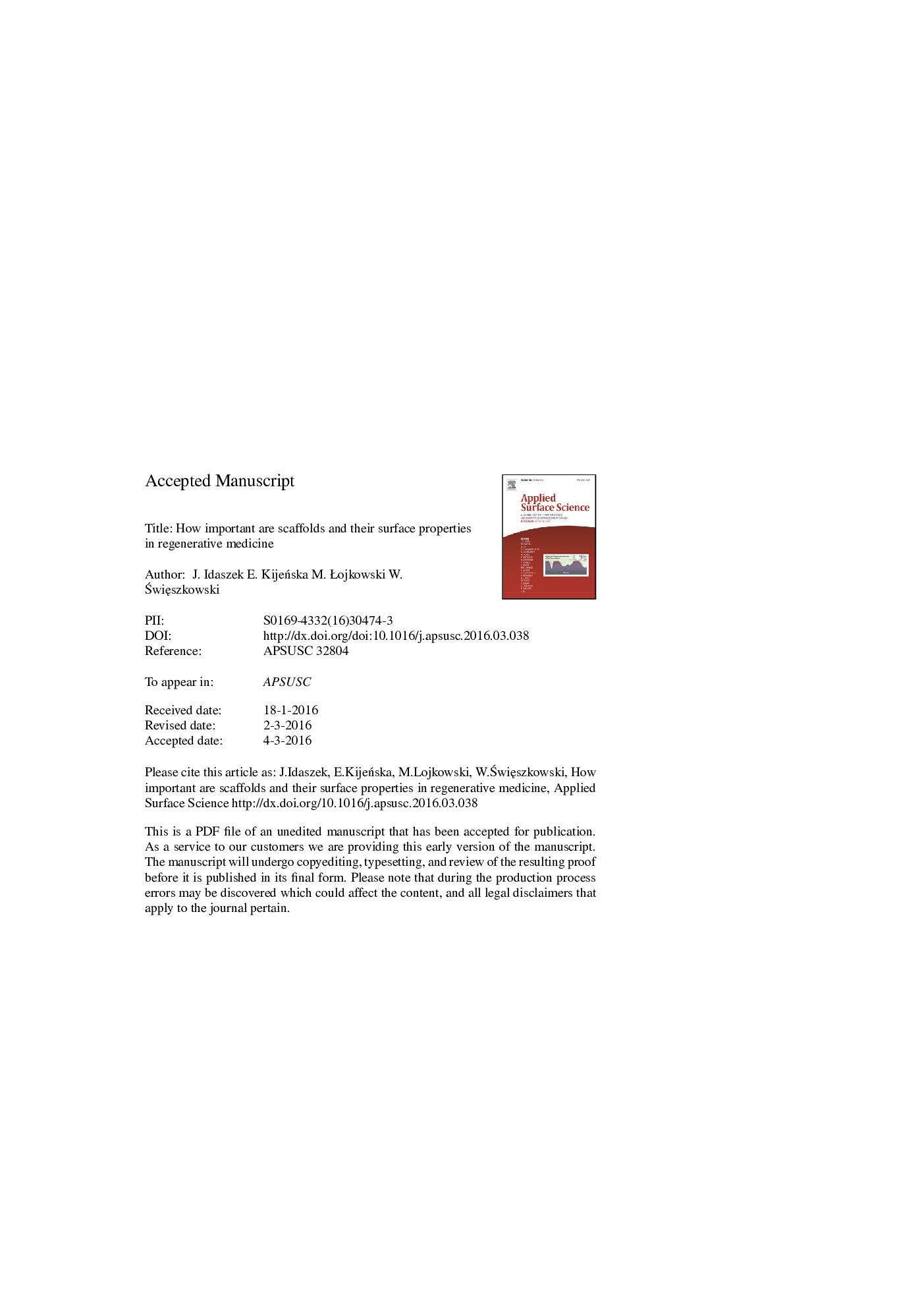| Article ID | Journal | Published Year | Pages | File Type |
|---|---|---|---|---|
| 5353437 | Applied Surface Science | 2016 | 38 Pages |
Abstract
The ability of cells to sense various cues present within their natural habitat gives a tremendous opportunity to steer their fate in vitro within artificial matrices (scaffolds). However, the variety of signals and their chemical and physical origin makes engineering of the scaffolds quite challenging and requires careful design in order to obtained the desired outcome. Herein, we discuss the effect of architecture and surface of scaffolds fabricated by means of additive manufacturing and electrospinning on cell retention, spreading, proliferation and differentiation. Additionally, we present some of the reported surface and bulk modifications of the scaffolds, which positively affected cell performance. Finally, in the last part we discuss application of multicellular spheroids as a useful tool to study cell performance within three-dimensional and porous structures.
Keywords
Related Topics
Physical Sciences and Engineering
Chemistry
Physical and Theoretical Chemistry
Authors
J. Idaszek, E. KijeÅska, M. Åojkowski, W. Swieszkowski,
